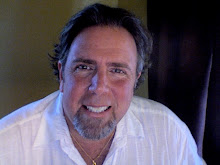The question is: Do we need money market mutual funds?
 Money market funds, first created in 1971 offer an investor, institutional or otherwise the opportunity to maintain the asset value of their investment - these funds offer a stable $1 net asset value or NAV - and make a little money in the process. For someone saving for their retirement, it is very little money and should not be part of the plan. But for the investor sitting on a pile of cash and not seeing any other good place to put, the money market fund is as good as any place - in the short term.
Money market funds, first created in 1971 offer an investor, institutional or otherwise the opportunity to maintain the asset value of their investment - these funds offer a stable $1 net asset value or NAV - and make a little money in the process. For someone saving for their retirement, it is very little money and should not be part of the plan. But for the investor sitting on a pile of cash and not seeing any other good place to put, the money market fund is as good as any place - in the short term.Are Money Market Mutual Funds a Shadow Bank?
Yes and no. By design, they are short-term debt instruments. Cash comes in and is lent to commercial borrowers in need of a short-term loan - usually less than thirteen months. This activity, according to former Federal Reserve chairman Paul Volker, who now works as an economic adviser to President Obama is done without the regulation needed to protect the consumer should a large lender default on that loan.
The overall worth of money market funds is around $3.5 trillion. Because the loans these funds offer thousands of borrowers are at a lower rate than those offered by banks and often for a shorter term, Mr. Volker believes that the industry needs to be insured much the same way banks are.
Volker has His Reasons
Back in September of 2008, just as Lehman Brothers and Bear Stearns shook the financial world, one with a bailout the other with a failure. a money market fund made headlines when it "broke the buck".
Money market funds seek to maintain that net asset value of one dollar, offering investors an assurance that whatever they place in the fund will still be there when they withdraw it. Some short-term (often minuscule) return is offered but the safety of that dollar is why investors park cash in these types of instruments.
When the Reserve Primary Fund wrote off the debt that was issued by Lehman Brothers on September 16, 2008, the oldest money fund broke the buck when its shares fell to 97 cents. This incident threatened to collapse the commercial paper market, essentially freezing the ability of many businesses to obtain short-term loans. Some of those loans were made so these businesses could make their payroll.
A Year Later
The President's Working Group on Financial Markets is expected to issue a statement on this part of the industry on September 15th. Although the SEC has not moved to change any of the liquidity requirements (the ability to tap reserves or insurance, such as the FDIC), Volker's suggestion would practically dissolve the money market as it is now known and add regulations that banks currently have in place. I say "practically" because if these regulations were in place, the popularity of these funds would be greatly diminished.
The real question is: can the FDIC handle the increased participation when (and if) money market funds were added to the list of lenders it insures? Even as the FDIC has been forced to bailout numerous banks over the last year, reducing its reserves to $13 billion - its lowest point - it still has access to over $100 billion from the Treasury, and if needed $500 billion.
The FDIC is suggesting that foreign banks be allowed to takeover troubled banks. This would be an interesting maneuver. With a 101 banks having failed since the crisis in financial markets began and the possibility that another 150 to 200 banks may still be at risk of failure, allowing foreign banks to enter into the marketplace might be the only alternative.
There is a decision expected today (08.26.09)to allow private equity to step in a purchase some of these troubles banks. Richard Bove of Rochdale Securities believes "The difficulty at the moment is finding enough healthy banks to buy the failing banks."
If any of these suggestions take hold, Volker's wish to regulate the money market funds, the FDIC opening the door to private equity or the allowing foreign banks (those with a presence here in the US), we might well see the recovery take a firm footing. Until then, we are simply playing the waiting game, hoping the proverbial "other shoe" doesn't drop.



